Hydrogel Bioelectronics for Health Monitoring
- PMID: 37622901
- PMCID: PMC10452556
- DOI: 10.3390/bios13080815
Hydrogel Bioelectronics for Health Monitoring
Abstract
Hydrogels are considered an ideal platform for personalized healthcare due to their unique characteristics, such as their outstanding softness, appealing biocompatibility, excellent mechanical properties, etc. Owing to the high similarity between hydrogels and biological tissues, hydrogels have emerged as a promising material candidate for next generation bioelectronic interfaces. In this review, we discuss (i) the introduction of hydrogel and its traditional applications, (ii) the work principles of hydrogel in bioelectronics, (iii) the recent advances in hydrogel bioelectronics for health monitoring, and (iv) the outlook for future hydrogel bioelectronics' development.
Keywords: bioelectronics; biomaterials; health monitoring; hydrogel; wearable sensor.
Conflict of interest statement
The authors declare no conflict of interest.
Figures
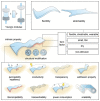



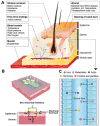


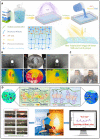
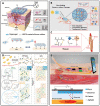
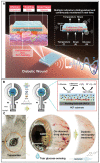
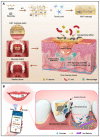

Similar articles
-
Nanomaterial-based biohybrid hydrogel in bioelectronics.Nano Converg. 2023 Feb 10;10(1):8. doi: 10.1186/s40580-023-00357-7. Nano Converg. 2023. PMID: 36763293 Free PMC article. Review.
-
Hydrogel bioelectronics.Chem Soc Rev. 2019 Mar 18;48(6):1642-1667. doi: 10.1039/c8cs00595h. Chem Soc Rev. 2019. PMID: 30474663 Review.
-
Self-Healing Hydrogel Bioelectronics.Adv Mater. 2024 May;36(21):e2306350. doi: 10.1002/adma.202306350. Epub 2024 Feb 12. Adv Mater. 2024. PMID: 37987498 Review.
-
Multifunctional Conductive Hydrogel Interface for Bioelectronic Recording and Stimulation.Adv Healthc Mater. 2024 Sep;13(22):e2400562. doi: 10.1002/adhm.202400562. Epub 2024 Jun 6. Adv Healthc Mater. 2024. PMID: 38773929 Review.
-
Hydrogel-Based Bioelectronics and Their Applications in Health Monitoring.Biosensors (Basel). 2023 Jun 30;13(7):696. doi: 10.3390/bios13070696. Biosensors (Basel). 2023. PMID: 37504095 Free PMC article. Review.
Cited by
-
Advanced Hydrogel Systems for Local Anesthetic Delivery: Toward Prolonged and Targeted Pain Relief.Gels. 2025 Feb 12;11(2):131. doi: 10.3390/gels11020131. Gels. 2025. PMID: 39996674 Free PMC article. Review.
-
Optimizing Flexible Microelectrode Designs for Enhanced Efficacy in Electrical Stimulation Therapy.Micromachines (Basel). 2024 Aug 30;15(9):1104. doi: 10.3390/mi15091104. Micromachines (Basel). 2024. PMID: 39337764 Free PMC article.
-
Amphibious Multifunctional Hydrogel Flexible Haptic Sensor with Self-Compensation Mechanism.Sensors (Basel). 2024 May 19;24(10):3232. doi: 10.3390/s24103232. Sensors (Basel). 2024. PMID: 38794086 Free PMC article.
-
Advances in hydrogel for diagnosis and treatment for Parkinson's disease.Front Pharmacol. 2025 Feb 12;16:1552586. doi: 10.3389/fphar.2025.1552586. eCollection 2025. Front Pharmacol. 2025. PMID: 40012627 Free PMC article. Review.
-
Cutting-Edge Hydrogel Technologies in Tissue Engineering and Biosensing: An Updated Review.Materials (Basel). 2024 Sep 29;17(19):4792. doi: 10.3390/ma17194792. Materials (Basel). 2024. PMID: 39410363 Free PMC article. Review.
References
-
- Nasiri S., Khosravani M.R. Progress and challenges in fabrication of wearable sensors for health monitoring. Sens. Actuator A Phys. 2020;312:112105. doi: 10.1016/j.sna.2020.112105. - DOI
Publication types
MeSH terms
Substances
Grants and funding
LinkOut - more resources
Full Text Sources

